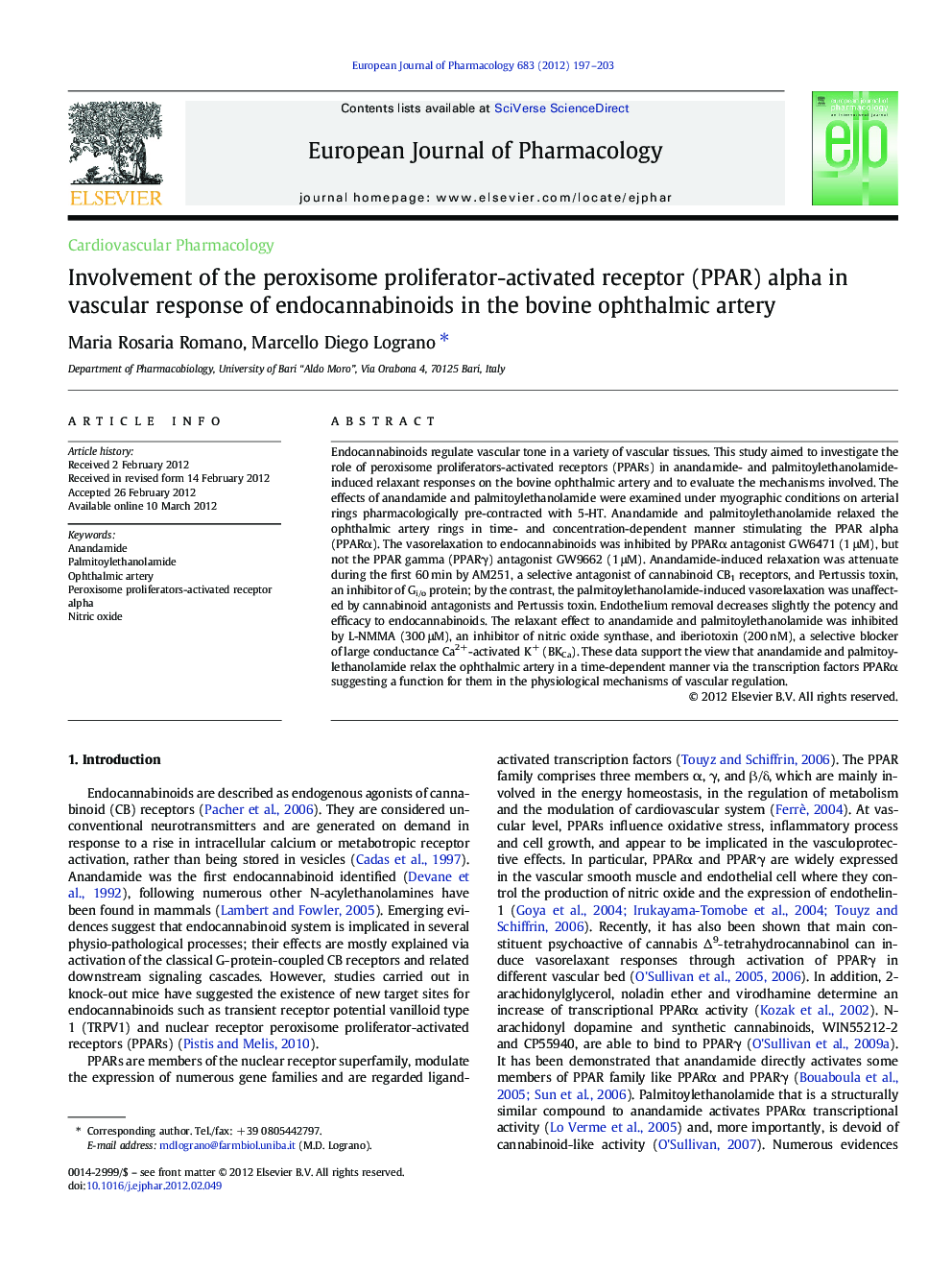| Article ID | Journal | Published Year | Pages | File Type |
|---|---|---|---|---|
| 5829632 | European Journal of Pharmacology | 2012 | 7 Pages |
Abstract
Endocannabinoids regulate vascular tone in a variety of vascular tissues. This study aimed to investigate the role of peroxisome proliferators-activated receptors (PPARs) in anandamide- and palmitoylethanolamide-induced relaxant responses on the bovine ophthalmic artery and to evaluate the mechanisms involved. The effects of anandamide and palmitoylethanolamide were examined under myographic conditions on arterial rings pharmacologically pre-contracted with 5-HT. Anandamide and palmitoylethanolamide relaxed the ophthalmic artery rings in time- and concentration-dependent manner stimulating the PPAR alpha (PPARα). The vasorelaxation to endocannabinoids was inhibited by PPARα antagonist GW6471 (1 μM), but not the PPAR gamma (PPARγ) antagonist GW9662 (1 μM). Anandamide-induced relaxation was attenuate during the first 60 min by AM251, a selective antagonist of cannabinoid CB1 receptors, and Pertussis toxin, an inhibitor of Gi/o protein; by the contrast, the palmitoylethanolamide-induced vasorelaxation was unaffected by cannabinoid antagonists and Pertussis toxin. Endothelium removal decreases slightly the potency and efficacy to endocannabinoids. The relaxant effect to anandamide and palmitoylethanolamide was inhibited by L-NMMA (300 μM), an inhibitor of nitric oxide synthase, and iberiotoxin (200 nM), a selective blocker of large conductance Ca2+-activated K+ (BKCa). These data support the view that anandamide and palmitoylethanolamide relax the ophthalmic artery in a time-dependent manner via the transcription factors PPARα suggesting a function for them in the physiological mechanisms of vascular regulation.
Related Topics
Life Sciences
Neuroscience
Cellular and Molecular Neuroscience
Authors
Maria Rosaria Romano, Marcello Diego Lograno,
